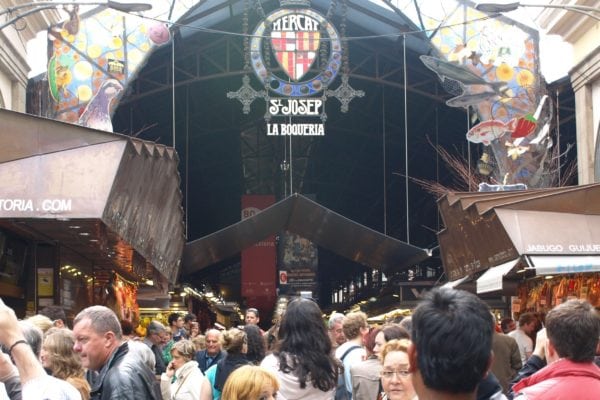FIRED UP
The Peas in Guac Situation
As I eased back into food Twitter post vacation, I was smacked in the face with a very aggressive response to a New York Times guacamole recipe
that featured… green peas. What? (To be fair, I would never have considered pistachios in guacamole until I ate some at Empellon in New York. So good.)
These recipes generally fall off of my radar pretty quickly, but this one stuck around like no other, with everyone and their mother, it seemed, weighing in in the sourcery — including the President of the United States, who was asked about the guac recipe during a previously scheduled Twitter Q&A.
A couple years ago, a weird or unpopular recipe would have just faded quietly into the distance with perhaps a letter to the editor or two from a disgruntled home cook. Now, almost as soon as the thing was published, amateur cooks and critics (and the professional ones, too), have a platform to publicly decry the offending ingredient.
At least we’re passionate?
CONVENIENCE
What Boxed Meals Mean for our Food Future
Interested in a #longread? I have one for you: The $5 Billion Battle For the American Dinner Plate details the history and recent popularity of boxed meal delivery services that allow consumers to cook dinner without having to think about what to make or where to find the ingredients. A new generation of young adults (that M word that I dislike) is embracing these for lots of reasons, and investors are pretty excited too, pumping a lot of cash into services like Blue Apron and Plated. Maybe because: “Basic everyday food is not as profitable as luxury take-out. Investors are excited that there’s now a higher-margin item on the horizon.”
The article also thoroughly covers the history of these services (the first one started in Sweden, of course. Scandinavia!) In the US, these services took off in New York and San Francisco, the article says, because “millennial urbanites” have expendable income and probably don’t have a car, making grocery shopping more challenging. Also, they may not know how to cook. (Thanks, helicopter parents.)
The piece is much, much longer and more involved than I can properly summarize here, so very much worth a read. But it does call out a perhaps unintended consequence of the success of these businesses: we’re not shopping for our own food, and we’re not using our own recipes — family recipes, or even just those that your mom may have taught you on a busy Tuesday night as a high schooler. And as a consequence of this, will some part of our own history get lost?
This is an interesting phenomenon to think about: now that feeding ourselves is easier than ever (assuming, that is, that “ourselves” refers to a tech-savvy population with enough disposable income to pay for convenience), will we lose some part of our history? Will something important get lost in the shuffle?
DATA
Chronicling the Changing Face of Wine
Delectable is one of my favorite food+tech mobile apps, and for good reason: what started as a diary of sorts for what wine I’m drinking turned quickly into a discovery mechanism and a way to follow wine professionals as they choose wine for their own tables.
If you’re unfamiliar: Delectable allows you to photograph the label of the wine you’re drinking, save it, rate it, share it with others, and find retail locations that carry it. You can also browse what others are sharing in order to discover your next favorite. And now, Delectable is sharing some information previously notoriously hard to find. Last week they released some statistics (based on one million user submissions) about what we’re drinking in an effort to identify trends and changing tastes.
One such trend, according to the NYT piece: “The rise of so-called grower Champagnes — from small houses that make wines exclusively with grapes they grow themselves.” Apparently, “ ‘People are getting inspired,’ said Julia Weinberg, Delectable’s self-described “wine geek” who heads up content and wine industry relations for the company. ‘They’re saying: Wow, it seems like suddenly all these chefs and sommeliers are drinking these Champagnes that I’ve never heard of. I want to try that, too.” “
PICTURES
Instagram Increases Photo Resolution
Good news for the Insta-obsessed: Instagram is increasing the resolution at which it saves your photos. Instead of 640x640px, images will be saved at 1080x1080px. As TechCrunch points out, the smaller size requires phones with larger screens to stretch the image — and forget about displaying them large on a laptop or desktop. The new size is large enough to look good anywhere (for now).
Digestifs
- New York! Go to this Food+Tech Connect meetup on the 22nd — Food+Tech Connect
- Taco Bell partners with DoorDash for delivery in select cities — TacoBell
- Resy has an API — @MichaelMontero


